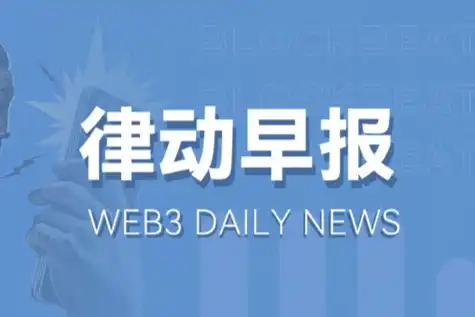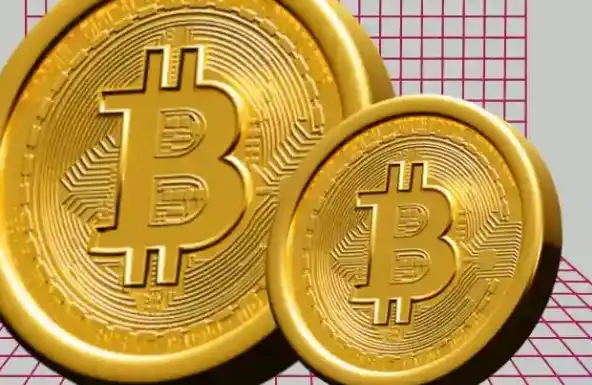$STO: Reinventing Insurance with Smart, Automated, and Decentralized Protection
$STO is making a significant impact in decentralized insurance, offering a transparent, automated, and user-first alternative to traditional insurance models. Conventional insurance is often bogged down by bureaucracy, delayed claims, lack of trust, and opaque underwriting processes. $STO introduces a blockchain-powered framework that transforms how policies are created, managed, and paid out.
Through smart contracts, $STO enables peer-to-peer insurance models where users pool funds, define coverage rules, and receive payouts automatically when conditions are met. This eliminates the need for centralized insurers and ensures that claims are settled instantly and fairly—without paperwork or long waiting periods.
Policy terms are coded into smart contracts, and events triggering payouts—like flight delays, crop failures, or health emergencies—can be verified via oracles that feed real-world data into the blockchain. This makes the process not only more efficient but also resistant to fraud or manipulation.
Communities can also form their own mutual insurance pools using $STO, tailored to specific needs and risks, from freelancers and gig workers to farmers and travelers. It’s insurance redesigned for transparency, speed, and trust.
Understanding the Technology Behind PumpBTC: A Deep Dive into Babylon’s Protocol
.
PumpBTC is part of a new wave of innovation in the cryptocurrency world, where liquid staking has emerged as a key solution for allowing asset holders to stake their tokens while retaining liquidity. At the core of PumpBTC’s functionality is the Babylon network, which provides the infrastructure and protocol to enable Bitcoin holders to participate in staking through a derivative token, PumpBTC.
The Babylon Network: A Technological Foundation
The Babylon network is a liquid staking protocol that operates on top of the Bitcoin blockchain, enabling users to stake their Bitcoin indirectly without locking it into a fixed staking mechanism. The primary goal of Babylon is to give users the ability to earn rewards for staking their Bitcoin, all while keeping their assets liquid and accessible for other uses.
To understand the technology behind PumpBTC, it's essential to first grasp how Babylon works:
1. Staking Mechanism: Babylon allows Bitcoin holders to send their BTC to a smart contract that pools the assets together. These pooled funds are then used for staking on the Babylon network, earning staking rewards.
2. Tokenized Staked Assets: When users stake their Bitcoin, they receive an equivalent amount of PumpBTC tokens in return. These PumpBTC tokens represent their staked BTC but can be freely traded, used, or reinvested in DeFi platforms.
3. Proof of Stake + Proof of Liquidity: While Bitcoin itself is not natively a proof-of-stake (PoS) cryptocurrency, Babylon’s protocol integrates a hybrid system that combines aspects of both proof-of-work (PoW) (the consensus mechanism Bitcoin uses) and proof-of-stake. This hybrid allows Bitcoin to participate in the staking ecosystem while maintaining the liquidity of the assets through tokenization. This provides users with an innovative way to benefit from staking rewards without sacrificing flexibility.
4. Cross-Chain Compatibility: One of the key technological features of the Babylon network is its cross-chain interoperability. While PumpBTC derives from Bitcoin, it can be used across a variety of blockchains and DeFi platforms. This feature unlocks Bitcoin’s potential to interact with decentralized applications that otherwise wouldn’t be able to access Bitcoin directly due to its native PoW protocol.
5. Smart Contracts and Security: To ensure transparency and security, Babylon relies on smart contracts that are rigorously audited and designed to operate with minimal risk. These smart contracts are what make the staking process seamless for users, as they handle everything from the pooling of Bitcoin to the minting of PumpBTC tokens. Smart contracts also allow for automated reward distribution, making the entire process more efficient and reducing the risk of human error or manipulation.
6. Governance and Upgrades: Babylon is also designed with governance in mind, allowing the community to have a say in future upgrades or protocol changes. This decentralized governance ensures that the network evolves in line with user needs and keeps the protocol resilient and adaptable.
How PumpBTC Utilizes Babylon's Technology
When a Bitcoin holder decides to stake their Bitcoin on Babylon, the following technological process takes place:
Deposit and Pooling: The user deposits their BTC into the Babylon staking pool. The system automatically pools together these funds and begins the staking process.
Minting of PumpBTC: In return for their staked BTC, users receive an equivalent amount of PumpBTC tokens. These tokens represent the staked BTC but are liquid, meaning they can be traded or used in other DeFi protocols.
Earning Rewards: As the staking continues, the pooled Bitcoin earns rewards based on the Babylon network’s staking model. These rewards are distributed to users in the form of additional PumpBTC tokens, which can then be used as desired.
$PUMP
$XRP Technical Breakdown: The Move We've Been Waiting For
After weeks of anticipation, $XRP has finally broken below the range lows, a key level many traders—including myself—have been closely monitoring for over a month. This move signals a shift in structure and opens the door to potential volatility and opportunity, especially for swing traders and long-term investors.
Now that we’ve cleared the range lows, attention shifts to two critical zones:
♦️ Local Supply Zone: This is the area that immediately preceded the breakdown. It now acts as a fresh resistance level. Any rally back into this zone without significant strength is likely to be met with selling pressure. Watching how price reacts here will provide clues about whether this is a deviation or the start of a new trend.
♦️ HTF (Higher Time Frame) Demand Zone (Highlighted in Green): This zone is now in play as a potential reversal region. Historically, price has respected this area as strong demand. If $XRP can form a base here, it may act as the foundation for a significant bounce or even a trend reversal.
As we enter this critical stage:
♦️ Consolidation is key. Ideally, price will bracket or range between these zones, allowing for proper accumulation and market absorption before any strong move back up.
♦️ Volume and reaction are everything. A low-volume drift into HTF demand is weaker than a sharp rejection followed by rising volume. Bulls will want to see strong defense of the green zone to confirm buyer interest.
♦️ No rush to position big. This is the time for patience, not FOMO. Let the market give confirmation through structure, wicks, and reactions.
In summary, $XRP has finally made its move—but the next move will be more important. Whether this becomes a deviation trap or a clean breakdown leading to lower lows will depend entirely on how price behaves around the zones mentioned above.
Stay sharp. Stay ready. Let the market come to you.
$STO
Absolutely! Here’s a detailed, long-form article exploring both the rewards and risks of investing in the $STO coin—structured to give a balanced view that helps readers make informed decisions.
$STO Coin: Weighing the Rewards and Risks of This Emerging Digital Asset
In an industry as volatile and fast-paced as cryptocurrency, new tokens constantly emerge—each with their own promise of innovation, profit, and community empowerment. One of the recent tokens gaining attention is $STO , a project that positions itself as a unique blend of decentralized finance (DeFi), smart tokenomics, and community-driven development.
But as with any investment, it's crucial to look beyond the hype. In this article, we’ll dig into what $STO coin offers in terms of rewards, and equally important, what risks investors should consider.
What Is $STO Coin?
$STO , short for Smart Token Offering, is more than just another altcoin. It represents a new wave of crypto projects aiming to combine real-world use cases with flexible token utilities. $STO has gained traction for its dual-focus mission:
Rewarding early adopters through token-based incentives, and
Creating long-term utility through partnerships, governance, and platform integration.
Built on a scalable blockchain (possibly Ethereum, BSC, or a native chain), $STO aims to create a decentralized ecosystem where holders aren’t just speculators, but participants in governance, staking, and community-led development.
The Rewards of Investing in $STO
1. Attractive Staking and Yield Incentives
One of the primary attractions of $STO is its staking protocol. Holders can lock their tokens and earn high APYs (Annual Percentage Yields), especially during the early phases. This encourages long-term holding and helps stabilize token price by reducing sell pressure.
Flexible locking periods offer tailored rewards.
Early stakers receive bonus multipliers, amplifying gains.
Auto-compounding mechanisms further enhance returns for passive holders.
2. Deflationary Supply Model
$STO incorporates a burn mechanism, where a small portion of tokens is permanently removed from circulation during transactions or platform usage. This gradually reduces total supply, increasing scarcity over time—a model that mimics the success of deflationary assets like BNB or SHIB.
This tokenomics strategy creates a supply-demand imbalance in favor of long-term price appreciation, assuming demand remains strong.
3. Community Governance and Voting Rights
$STO isn’t just about holding—it’s about participation. The project incorporates a decentralized governance model that gives token holders real influence over:
Development priorities
Platform integrations
Treasury fund allocation
Future use-case expansions
Involving the community enhances transparency, drives loyalty, and keeps the ecosystem evolving based on user needs.
4. Early-Phase Growth Potential
Like many altcoins in their early days, $STO is in its pre-mass adoption phase, which means there is a significant upside potential if the project gains traction.
If $STO achieves listings on major exchanges, secures key partnerships, or launches unique features, early investors could realize outsized returns compared to more mature tokens.
The Risks of $STO Coin Investment
Despite the compelling rewards, it’s essential to address the risks—especially in a market known for volatility and speculation.
1. Market Volatility
As a newer coin, $STO is especially vulnerable to extreme price swings. Thin order books and speculative trading can lead to massive surges—or sharp crashes—based on social media hype, influencer tweets, or whale moves.
Risk: Short-term price instability
Mitigation: Only invest what you can afford to lose, or use DCA (Dollar Cost Averaging) strategies
2. Regulatory Uncertainty
Depending on how $STO is structured—especially if it falls under the category of a "security token"—it could face regulatory scrutiny. Jurisdictions like the U.S. are increasingly tightening rules around token offerings.
Risk: Legal action or forced delisting from exchanges
Mitigation: Stay informed on jurisdictional laws and project compliance statements
3. Smart Contract Vulnerabilities
If $STO is built on a DeFi protocol or involves complex staking mechanisms, it may be exposed to smart contract bugs or exploits, which have plagued even well-known DeFi platforms.
Risk: Loss of funds due to bugs or hacks
Mitigation: Look for third-party audits and active developer communication
4. Lack of Liquidity
New tokens often face liquidity challenges, meaning you might not be able to buy or sell large amounts of $STO without impacting the price.
Risk: Slippage or inability to exit positions quickly
Mitigation: Monitor trading volumes and diversify your portfolio
5. Project Longevity and Execution Risk
As with any startup, the future of $STO depends on the team’s ability to deliver on promises. Roadmaps can change, partnerships can fall through, and community interest can fade.
Risk: Project abandonment or underperformance
Mitigation: Track the team’s transparency, development progress, and community engagement
Conclusion: Balanced Optimism with Due Diligence
$STO coin presents a compelling opportunity for crypto investors who believe in early-phase tokens with strong community models and innovative tokenomics. The rewards—from staking returns to governance participation and potential long-term growth—are real.
However, the risks—volatility, regulatory gray areas, technical vulnerabilities, and execution challenges—should not be overlooked.
As always in crypto, the smartest investors are those who:
Do their own research (DYOR)
Manage risk through diversification
Stay plugged into the community and news updates
If $STO can continue to build momentum, maintain transparency, and deliver real utility, it may well become one of the next big players in the altcoin space.
But until then, approach with cautious optimism—because in crypto, it’s not just about the ride up… it’s about surviving the dips, too.

If you're looking for evidence of traditional finance intersecting with something like $STO , it could be about the growing acceptance of blockchain technology and tokenization in traditional finance. Traditional financial institutions and investors may be looking at STOs as a way to bring traditional assets (like stocks, bonds, or real estate) to the blockchain.
Here’s how you might see traditional finance intersecting with $STO :
1. Regulatory Frameworks:
Traditional financial markets are highly regulated, and the same can be said for STOs. This is one way $STO connect to traditional financial systems, as they need to comply with laws such as securities regulations, anti-money laundering (AML), and know-your-customer (KYC) policies.
2. Institutional Interest:
Traditional institutions (e.g., banks, hedge funds) are increasingly interested in blockchain technology and $STO s as they offer opportunities to tokenize real-world assets like stocks, bonds, or commodities, making them tradable on a blockchain. This can be more efficient and secure.
3. Tokenization of Traditional Assets:
$STO s allow for the tokenization of assets traditionally held in physical form, such as real estate or shares of a company. This brings traditional finance closer to the crypto world by enabling asset ownership and transfer on blockchain platforms.
4. Security:
In contrast to unregulated tokens or cryptocurrencies, $STO s are seen as safer for traditional investors because they are often subject to the same regulations as traditional securities, which can help reduce fraud and risk.
Could you clarify if this is what you meant, or if you’re referring to something else like a specific token or asset (like $STO ) in your question? It would help provide a more accurate response.


 Lowest price
Lowest price Highest price
Highest price 













































